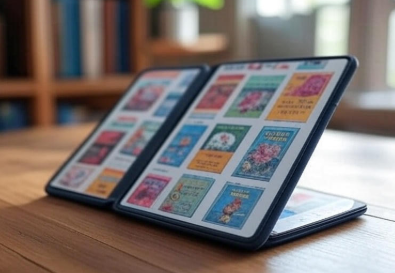Six months ago, I thought generative AI was just another tech buzzword that would fade away like so many others. As a full-stack developer working in Singapore’s fintech sector, I’d seen enough “revolutionary” technologies come and go. But watching Singapore’s approach to GenAI adoption has completely changed my perspective and honestly, it’s been wild to witness from the inside.
The Numbers Don’t Lie
The transformation happened faster than anyone expected. 79% of employees in Singapore currently use GenAI as part of their job today, up from 24% in 2023 that’s more than triple the adoption rate in just one year. When I first read that statistic, I had to double-check it because it seemed too aggressive. But then I looked around my own workplace and realized we’d become part of that statistic without even thinking about it.
My team started using GitHub Copilot for code completion, then ChatGPT for documentation, then Claude for architectural decisions. Before we knew it, GenAI had become as integral to our workflow as our IDEs. What started as curiosity-driven experimentation became essential tooling practically overnight.
Government Leading by Example, Not Just Policy
What sets Singapore apart isn’t just the rapid adoption it’s how thoughtfully the government has approached the rollout. The Singapore government released its Model AI Governance Framework for Generative AI in May 2024, but unlike typical regulatory frameworks that feel restrictive, this one actually helped us navigate implementation challenges.
The framework addressed real concerns we were grappling with: data privacy, model bias, and accountability. Instead of hampering development, it gave us guardrails that made stakeholders more comfortable with AI integration. When your government publishes practical guidance rather than vague warnings, it signals serious intent.
Singapore is investing $150M for public healthcare GenAI adoption, with projects rolling out across the public healthcare system before end-2025. This isn’t just about throwing money at technology—it’s about creating a template for systematic AI integration that other sectors can follow.
The SME Reality Check
The most impressive part of Singapore’s approach has been supporting small and medium enterprises. The GenAI Sandbox is expected to benefit some 300 SMEs from sectors including retail, F&B, education, and hospitality. As someone who’s worked with local startups, I know how challenging it can be for smaller companies to adopt new technologies without significant upfront investment.
I recently helped a local restaurant chain implement AI-powered customer service chatbots through one of these sandbox programs. Six months ago, they were handling customer inquiries manually through WhatsApp. Now they’re processing 10x more queries with the same staff size, and customer satisfaction scores have actually improved because response times are instant.
The sandbox approach removes the typical barriers cost, technical expertise, and implementation risk. SMEs can experiment with production-ready solutions without betting the farm on unproven technology.
From 9-to-5 to Always-On Productivity
Singaporean knowledge workers could save up to 14 hours per week between now and 2028 by applying generative AI to their jobs. Initially, I was skeptical about these productivity claims. Every new technology promises efficiency gains that rarely materialize in practice.
But after eight months of integrated GenAI usage, I’m convinced these numbers are conservative. My personal experience suggests the time savings are front-loaded rather than gradual. Tasks that used to take me hours like writing comprehensive API documentation or creating test cases now take minutes. The cognitive load reduction is equally significant; I spend less mental energy on routine tasks and more on creative problem-solving.
The productivity gains aren’t just individual they’re systemic. Code reviews happen faster because AI helps catch obvious issues before human reviewers see them. Sprint planning is more accurate because AI helps estimate task complexity based on historical data. Even client communication improves because AI helps translate technical concepts into business language.
The Developer Experience Revolution
What surprised me most about Singapore’s GenAI acceleration isn’t the government initiatives or corporate adoption it’s how fundamentally it’s changed what it means to be a developer. We’re not just writing code anymore; we’re orchestrating AI systems that write code, test code, document code, and sometimes even refactor code.
The learning curve has been steep but rewarding. Understanding prompt engineering has become as important as understanding design patterns. Knowing when to trust AI output and when to verify manually has become a core skill. The developers who are thriving in this environment aren’t necessarily the ones who were strongest at traditional coding they’re the ones who adapted fastest to human-AI collaboration.
Challenges We’re Still Solving
Singapore’s GenAI adoption hasn’t been without friction. Data localization requirements create complexity when working with cloud-based AI services. Cost management is tricky because AI usage doesn’t scale linearly some tasks become incredibly cheap while others remain expensive.
Integration challenges are real. Legacy systems weren’t designed to work with AI, and retrofitting AI capabilities often requires significant architectural changes. We’ve learned to approach AI integration iteratively rather than attempting wholesale transformations.
Quality control remains an ongoing concern. AI-generated code needs human oversight, but determining the right level of oversight requires experience that most teams are still developing. We’ve implemented code review processes specifically for AI-generated content, but we’re still refining these workflows.
Looking Forward: What’s Next?
Singapore had an artificial intelligence deployment rate of 53 percent in 2024, which positions it well globally but suggests there’s still significant room for growth. The foundation has been laid, but we’re still in the early stages of realizing AI’s full potential.
The next phase will likely focus on AI system integration rather than individual tool adoption. Instead of using separate AI tools for different tasks, we’ll see platforms that seamlessly integrate AI capabilities across entire workflows. This will require better interoperability standards and more sophisticated orchestration tools.
Industry-specific AI applications are already emerging. The legal sector is using AI to automatically generate more than 15,000 summaries of unreported judgments on LawNet, which demonstrates how AI can augment highly specialized professional work.
The Human Element Remains Critical
Despite the rapid AI adoption, the human element remains irreplaceable. AI excels at pattern recognition and task automation, but strategic thinking, creative problem-solving, and relationship management still require human intelligence. The most successful teams I’ve observed treat AI as a powerful assistant rather than a replacement for human expertise.
Singapore’s approach to GenAI adoption has been pragmatic rather than utopian. There’s recognition that AI will transform work rather than eliminate it, and the focus has been on upskilling workers to collaborate effectively with AI systems rather than competing against them.
Insights
Singapore’s acceleration of GenAI adoption feels like a preview of the future. The combination of government support, private sector innovation, and cultural adaptability has created an environment where AI integration happens naturally rather than being forced.
As developers, we’re living through a fundamental shift in how software gets built. The tools, processes, and skills that defined our profession just two years ago are evolving rapidly. Singapore’s approach—thoughtful, systematic, but not overly cautious—offers a roadmap that other regions would be wise to study.
The GenAI revolution isn’t coming to Singapore, it’s already here. And from what I’ve seen as a developer working in this environment, it’s just the beginning.



